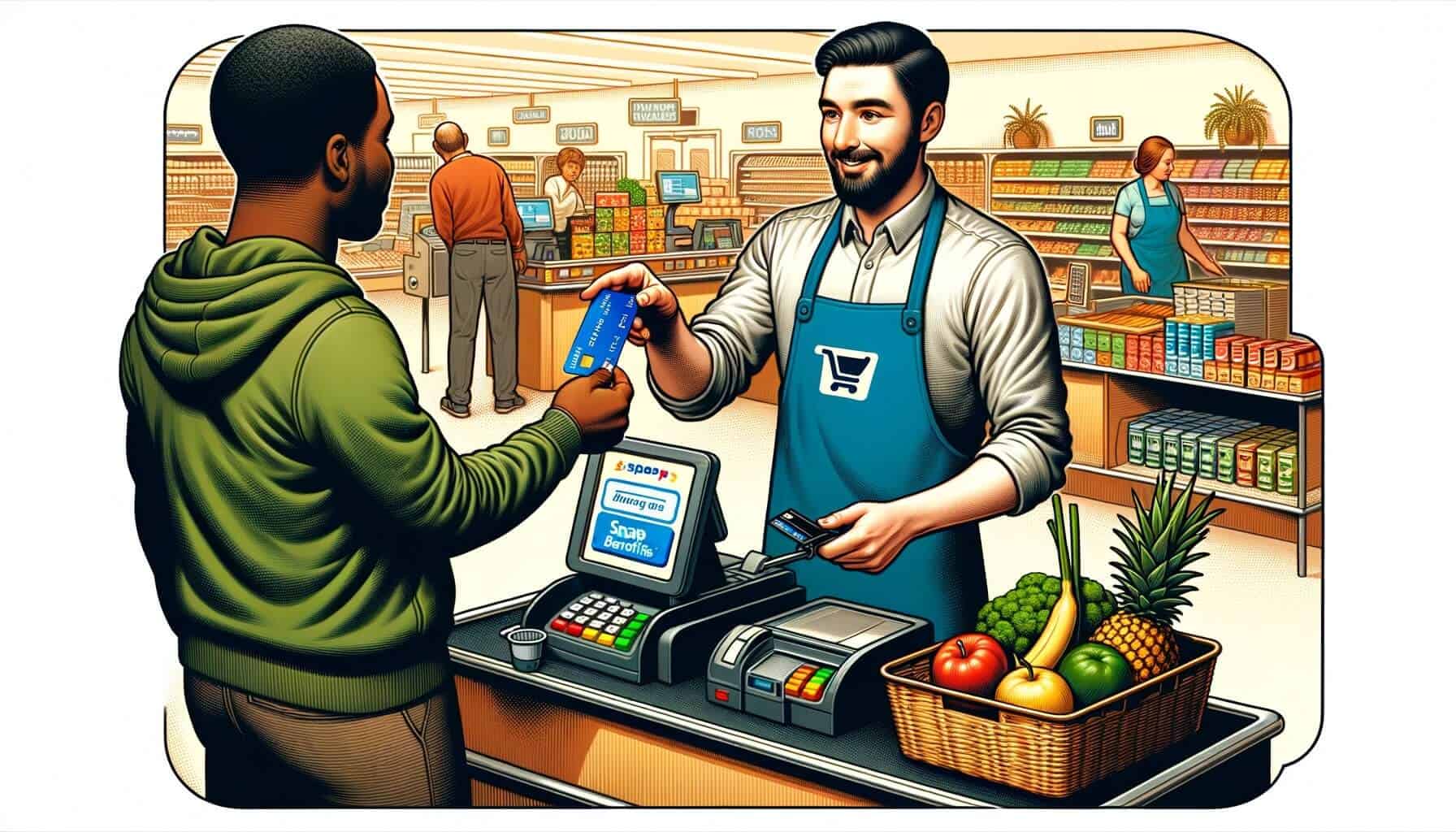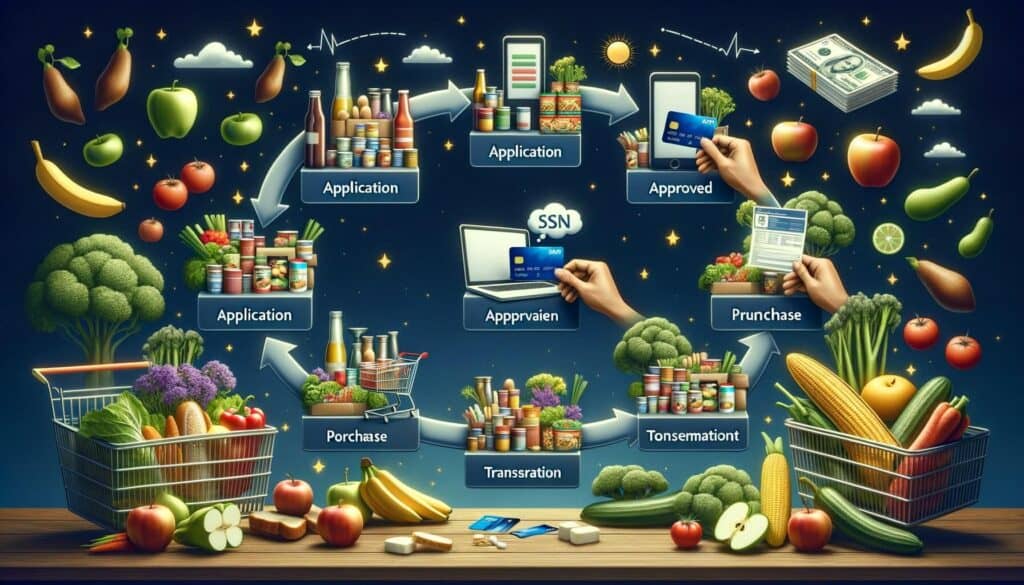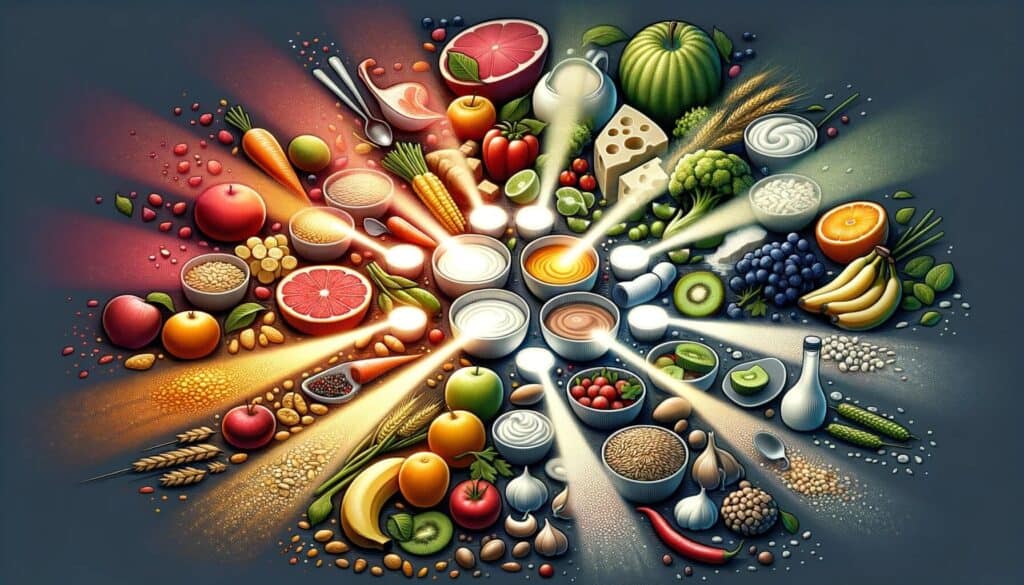
By admin April 16, 2025
The Supplemental Nutrition Assistance Program (SNAP), formerly known as the Food Stamp Program, is a federal assistance program in the United States that provides eligible low-income individuals and families with funds to purchase food. As a cashier, it is crucial to understand the ins and outs of SNAP benefits to ensure a smooth and efficient transaction process for SNAP recipients. This comprehensive guide will provide cashiers with the necessary information to effectively accept SNAP benefits and serve their customers.
Eligibility Requirements for SNAP Benefits: What Cashiers Need to Know

To determine if a customer is eligible for SNAP benefits, cashiers must be familiar with the program’s eligibility requirements. SNAP eligibility is based on factors such as income, household size, and expenses. It is important to note that eligibility criteria may vary from state to state, so cashiers should familiarize themselves with their state’s specific guidelines.
1. Income Limits: SNAP benefits are primarily intended for low-income individuals and families. The income limits for SNAP eligibility are set at 130% of the federal poverty level (FPL). Cashiers should be aware of the income thresholds and ensure that customers meet the income requirements.
2. Household Size: SNAP benefits are calculated based on the size of the household. Cashiers should ask customers about their household size to determine the appropriate benefit amount.
3. Citizenship and Immigration Status: SNAP benefits are generally available to U.S. citizens and certain qualified non-citizens. Cashiers should be aware of the acceptable documentation for verifying citizenship or immigration status.
4. Work Requirements: Some individuals may be subject to work requirements to receive SNAP benefits. Cashiers should be familiar with the work requirements in their state and ask customers about their employment status if necessary.
Acceptable Forms of SNAP Payment: A Comprehensive Overview

SNAP benefits are typically provided through an Electronic Benefit Transfer (EBT) card, which functions like a debit card. Cashiers must be knowledgeable about the acceptable forms of SNAP payment to ensure a smooth transaction process.
1. EBT Cards: The most common form of SNAP payment is the EBT card. Cashiers should be familiar with the appearance of EBT cards and know how to process transactions using the card reader.
2. PIN Entry: SNAP recipients are required to enter a Personal Identification Number (PIN) to access their benefits. Cashiers should ensure that customers enter their PIN securely and discreetly.
3. Cash Back: SNAP benefits can only be used to purchase eligible food items. Cashiers should be aware that cash back is not allowed during SNAP transactions.
4. Split Transactions: In some cases, customers may have a combination of SNAP benefits and other forms of payment. Cashiers should know how to process split transactions to ensure accurate payment.
SNAP Transaction Process: Step-by-Step Guide for Cashiers

To effectively accept SNAP benefits, cashiers should follow a step-by-step process to ensure accuracy and efficiency. By following these guidelines, cashiers can provide a seamless experience for SNAP recipients.
1. Verify EBT Card: Before starting the transaction, cashiers should verify that the customer’s EBT card is valid and belongs to them. This can be done by checking the card’s expiration date and comparing the customer’s name with the one on the card.
2. Select Payment Method: Cashiers should select the appropriate payment method on the register or point-of-sale system to initiate the SNAP transaction.
3. Enter Purchase Amount: Cashiers should enter the total purchase amount, including eligible food items, into the register or point-of-sale system.
4. Swipe EBT Card: Cashiers should instruct the customer to swipe their EBT card through the card reader. The system will prompt the customer to enter their PIN.
5. Verify Transaction Approval: Once the customer enters their PIN, the system will verify the transaction and display the approval message. Cashiers should ensure that the transaction is approved before proceeding.
6. Separate Eligible and Ineligible Items: Cashiers should separate eligible food items from non-eligible items during the bagging process. This helps customers and store personnel easily identify which items are covered by SNAP benefits.
7. Calculate Remaining Balance: If the customer has a remaining balance after using their SNAP benefits, cashiers should inform them of the amount and ask for an alternative form of payment.
8. Provide Receipt: Cashiers should provide the customer with a receipt that clearly indicates the amount paid with SNAP benefits and any remaining balance.
Identifying Eligible Food Items: Guidelines for Cashiers

Cashiers play a crucial role in ensuring that SNAP benefits are used to purchase eligible food items. It is essential to be familiar with the guidelines for identifying eligible items to avoid any errors or misunderstandings.
1. Eligible Food Items: SNAP benefits can be used to purchase a variety of food items, including fruits, vegetables, meat, poultry, dairy products, bread, and cereals. Cashiers should be familiar with the specific guidelines for eligible items in their state.
2. Non-Eligible Items: SNAP benefits cannot be used to purchase non-food items such as alcohol, tobacco, pet food, vitamins, and hot prepared foods. Cashiers should be vigilant in identifying and excluding these items from SNAP transactions.
3. Exclusions and Restrictions: Some food items may have specific exclusions or restrictions. For example, energy drinks and dietary supplements are generally not eligible for purchase with SNAP benefits. Cashiers should be aware of these exclusions and inform customers accordingly.
4. Price Matching: Cashiers should be cautious when price matching eligible food items. The price match should be based on the regular price, not any temporary discounts or promotions.
Handling SNAP Exceptions and Special Cases: A Cashier’s Guide
In certain situations, cashiers may encounter exceptions or special cases when accepting SNAP benefits. It is important to handle these situations with care and follow the appropriate procedures.
1. Manual Vouchers: In rare cases, customers may present manual vouchers instead of an EBT card. Cashiers should follow the specific guidelines provided by their state or the USDA to process manual vouchers.
2. Replacement Cards: If a customer’s EBT card is lost, stolen, or damaged, they may request a replacement card. Cashiers should provide the necessary information and instructions for obtaining a replacement card.
3. Expired Benefits: SNAP benefits are typically issued on a monthly basis and have an expiration date. Cashiers should be aware of the expiration date and inform customers if their benefits have expired.
4. Discrepancies in Benefit Amount: If a customer believes there is a discrepancy in their benefit amount, cashiers should direct them to contact their local SNAP office for assistance. Cashiers should avoid engaging in disputes or attempting to resolve benefit discrepancies themselves.
Common Mistakes to Avoid When Accepting SNAP Benefits
To ensure a smooth and error-free process, cashiers should be aware of common mistakes that can occur when accepting SNAP benefits. By avoiding these mistakes, cashiers can provide a positive experience for SNAP recipients.
1. Mishandling EBT Cards: Cashiers should handle EBT cards with care and avoid damaging or misplacing them. Mishandling EBT cards can cause inconvenience and delays for customers.
2. Incorrectly Entering Purchase Amounts: Accurately entering the purchase amount is crucial to ensure that SNAP benefits are properly applied. Cashiers should double-check the entered amount to avoid overcharging or undercharging customers.
3. Allowing Cash Back: Cashiers should be vigilant in preventing customers from receiving cash back during SNAP transactions. Cash back is not allowed and can result in penalties for both the customer and the store.
4. Ignoring Exclusions and Restrictions: Cashiers should carefully review the list of eligible and non-eligible items to avoid inadvertently allowing the purchase of non-eligible items with SNAP benefits.
Dealing with Customer Complaints and Disputes: Tips for Cashiers
Customer complaints and disputes can arise when accepting SNAP benefits. Cashiers should be prepared to handle these situations professionally and effectively. Here are some tips for dealing with customer complaints and disputes:
1. Active Listening: Cashiers should actively listen to the customer’s concerns and allow them to fully express their grievances. This demonstrates empathy and helps in understanding the issue at hand.
2. Remain Calm and Professional: Cashiers should maintain a calm and professional demeanor when dealing with customer complaints. It is important to avoid becoming defensive or argumentative.
3. Offer Solutions: Cashiers should strive to find a solution that satisfies the customer while adhering to SNAP guidelines. This may involve offering a refund, suggesting an alternative product, or providing information on how to address the issue with the SNAP office.
4. Seek Managerial Assistance: If a customer complaint or dispute cannot be resolved at the cashier level, cashiers should seek assistance from a manager or supervisor. Managers are often equipped with the authority and knowledge to handle more complex situations.
Frequently Asked Questions (FAQs) about Accepting SNAP Benefits
Q1. Can SNAP benefits be used to purchase non-food items?
Answer: No, SNAP benefits can only be used to purchase eligible food items. Non-food items such as alcohol, tobacco, and pet food are not eligible for purchase with SNAP benefits.
Q2. Can customers use their SNAP benefits at any store?
Answer: SNAP benefits can be used at authorized retailers that have been approved to accept SNAP payments. Customers should look for the SNAP logo or inquire with the store to ensure they can use their benefits.
Q3. What should cashiers do if a customer’s EBT card is declined?
Answer: If a customer’s EBT card is declined, cashiers should inform the customer and suggest that they contact their local SNAP office for assistance. Cashiers should avoid speculating on the reason for the decline or attempting to resolve the issue themselves.
Q4. Can customers use their SNAP benefits to purchase hot prepared foods?
Answer: In general, SNAP benefits cannot be used to purchase hot prepared foods. However, there are exceptions for certain homeless, elderly, or disabled individuals who may be eligible to use their benefits at authorized retailers that offer hot prepared meals.
Conclusion
As a cashier, understanding the intricacies of accepting SNAP benefits is essential to providing excellent customer service and ensuring compliance with program guidelines. By familiarizing themselves with eligibility requirements, acceptable forms of payment, transaction processes, eligible food items, exceptions, and common mistakes to avoid, cashiers can confidently and efficiently serve SNAP recipients.
By following the guidelines outlined in this comprehensive guide, cashiers can contribute to a positive experience for SNAP beneficiaries and help ensure their nutritional needs are met.